Syracuse, Temple of Athena
Q3983226Syracuse: the ancient capital of Sicily.
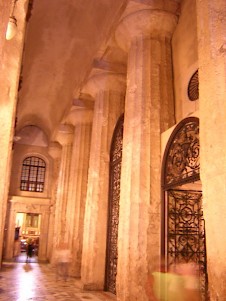
Syracuse is a modern city standing on an ancient one. As a consequence, not many remains of the ancient period are visible. One has only to enter the town's baroque cathedral (Duomo), however, to stand in an ancient Greek temple. It was once dedicated to the goddess Athena (Minerva) and may have been erected to celebrate the victory at Himera in 480 BCE.
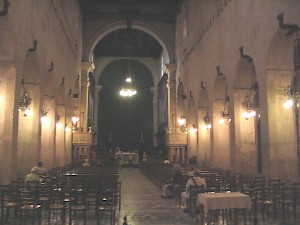
Excavations have made it clear that there was an earlier, demolished temple, probably also in Dorian style, and that the new temple was partly built over a very old, pre-Greek house.
The Temple of Athena was converted into a church in the seventh century by Zosimus, bishop of Syracuse from 649 to c.660. In today's church, the altar is more or less on the site of the ancient cella. The columns of the sanctuary are a bit irregular, due to an earthquake.
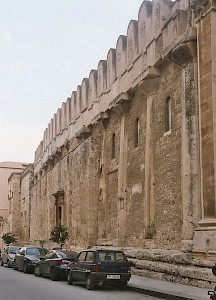
As you can see on the third picture, the space between twelve columns was filled up with bricks, and leave the columns visible. This explains why the church is still named "Santa Maria delle Colonne".
Later in the seventh century, the church became the cathedral of Syracuse, and has remained so to the present day. The baroque decoration of the interior has been removed, but several mosaics from the seventh-century church have survived and can still be seen in the cathedral. The Byzantine apse of the northern aisle also dates back to the seventh century. The ancient Greek inscription on a marble font that one can see in the church, however, does not belong to the original church; it was found in the Catacombs of San Giovanni.
A model in the Museo Archeologico Regionale "Paolo Orsi" shows a second, Ionic temple, standing to the right of the temple of Athena. The remains are visible beneath the modern Muncipio building, where you can also see remains of a structure that dates back to the eighth century BCE (the oldest building in Syracuse). Construction of the Ionic temple was probably started in 530 BCE, but the temple was demolished, as elements were reused in the temple of Athena.
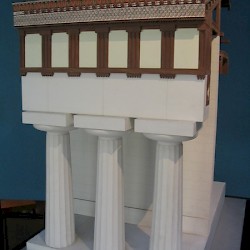 Syracuse, Temple of Athena, Model |
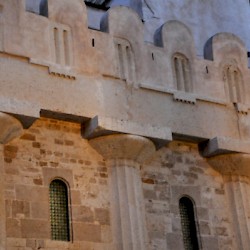 Syracuse, Temple of Athena, Outside wall |
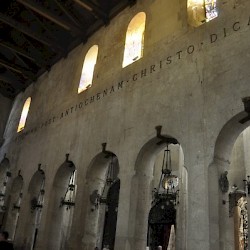 Syracuse, Temple of Athena, Nave |
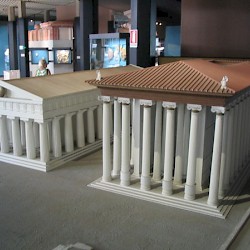 Syracuse, Two temples, Model |